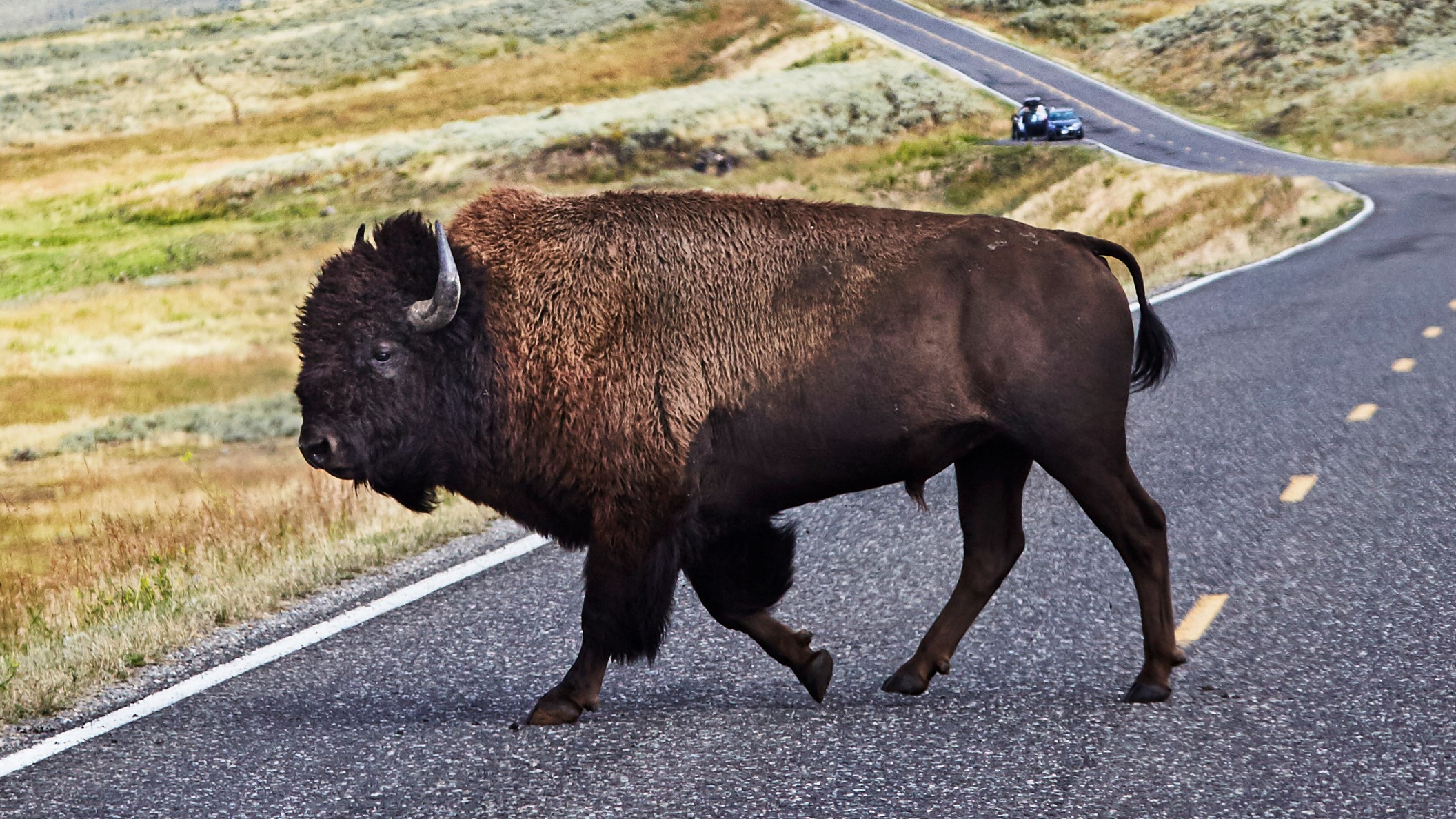
Bison are responsible for more injuries than any other animal at Yellowstone National Park, but some visitors still underestimate their speed and power. Photos are currently circulating on social media showing one family learning that lesson the hard way after straying too close to one of the animals during a hiking trip.
The first of the two pictures, posted on infamous Instagram account TouronsOfYellowstone this week, shows a group of seven standing just off a trail, being charged by a bull that appears to have targeted an elderly woman. In the second picture, she has been knocked off her feet (hopefully unharmed) while the animal holds its tail aloft in a characteristically aggressive position, seemingly pawing the ground and liable to charge again.
Getting up close and personal with the wildlife is one of the biggest mistakes people make when visiting Yellowstone. Although bison and elk may seem docile at first, they are unpredictable and their behavior can change in an instant, particularly if they feel threatened.
The National Park Service (NPS) warns visitors to stay at least 25 yards (23 meters) away from elk and bison at all times, and 100 yards (91 meters) away from wolves and bears. The safest place to watch wildlife is from inside your car (though pierced bodywork and punctured tires are still a risk if you're unlucky).
"Give bison space when they are near a campsite, trail, boardwalk, parking lot, or in a developed area. If need be, turn around and go the other way to avoid interacting with a wild animal in close proximity," says the NPS.
"Approaching bison threatens them, and they may respond by bluff charging, head bobbing, pawing, bellowing, or snorting. These are warning signs that you are too close and that a charge is imminent."
Bison attacks
Bison, like all wild animals, generally prefer to avoid close contact with people, but females can be particularly aggressive in the spring when defending their calves (also known as 'red dogs' for their ginger-colored fur), and males can be more prone to attack during the rutting season in late summer as they compete for dominance and the right to mate.
Last summer two people were gored by bison at US National Parks within a week, both of whom suffered abdominal injuries. The first victim was charged while walking near the north shore of Lake Yellowstone, while the second was attacked at Painted Canyon Trailhead in Theodore Roosevelt National Park.
"Bison are large, powerful, and wild," said the NPS in a statement at the time. "They can turn quickly and can easily outrun humans. Bulls can be aggressive during the rutting (mating) season, mid-July through August. Use extra caution and give them additional space during this time."
For more advice, see our guides how to avoid being gored by a bison and wildlife safety: eight tips for unexpected encounters.







